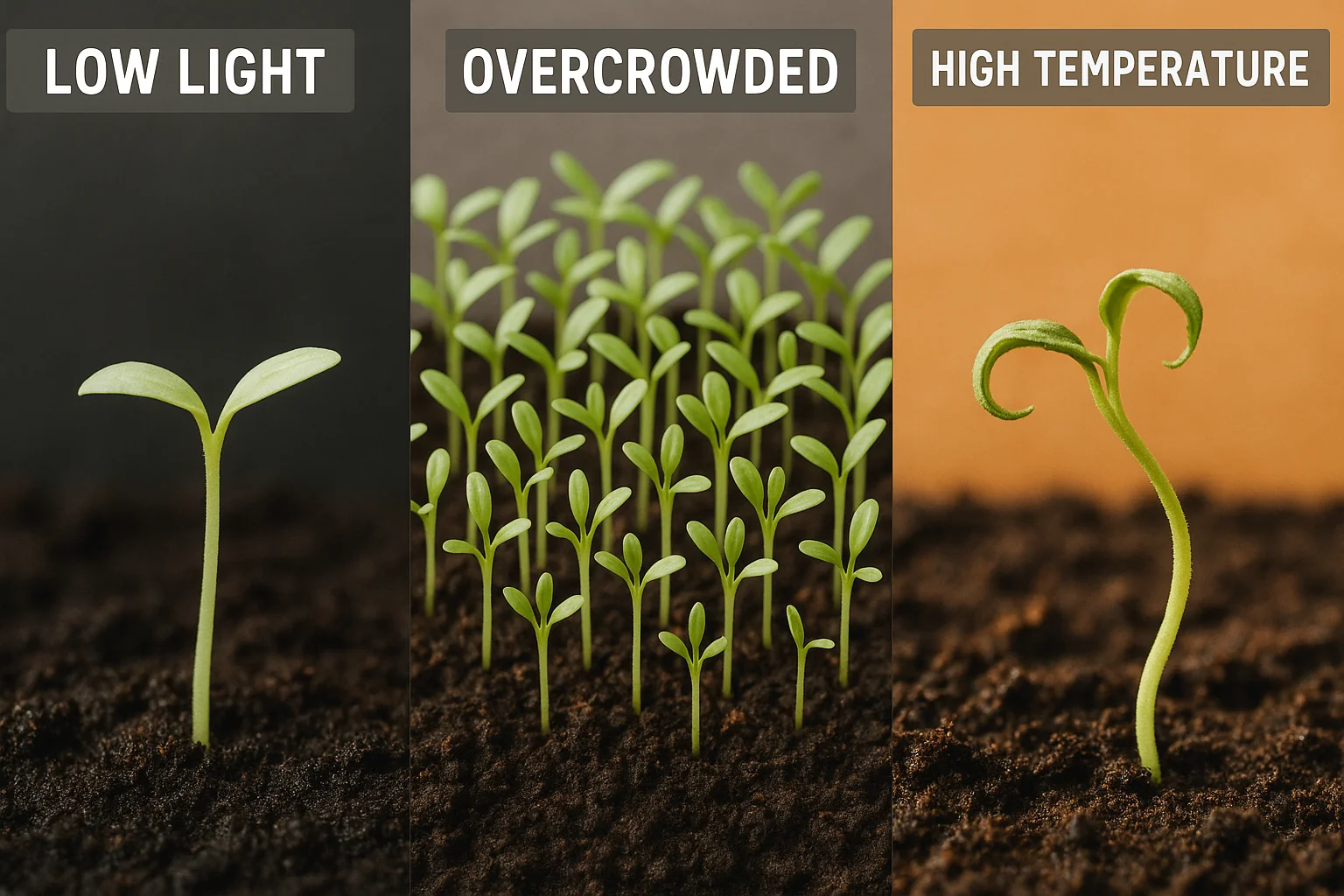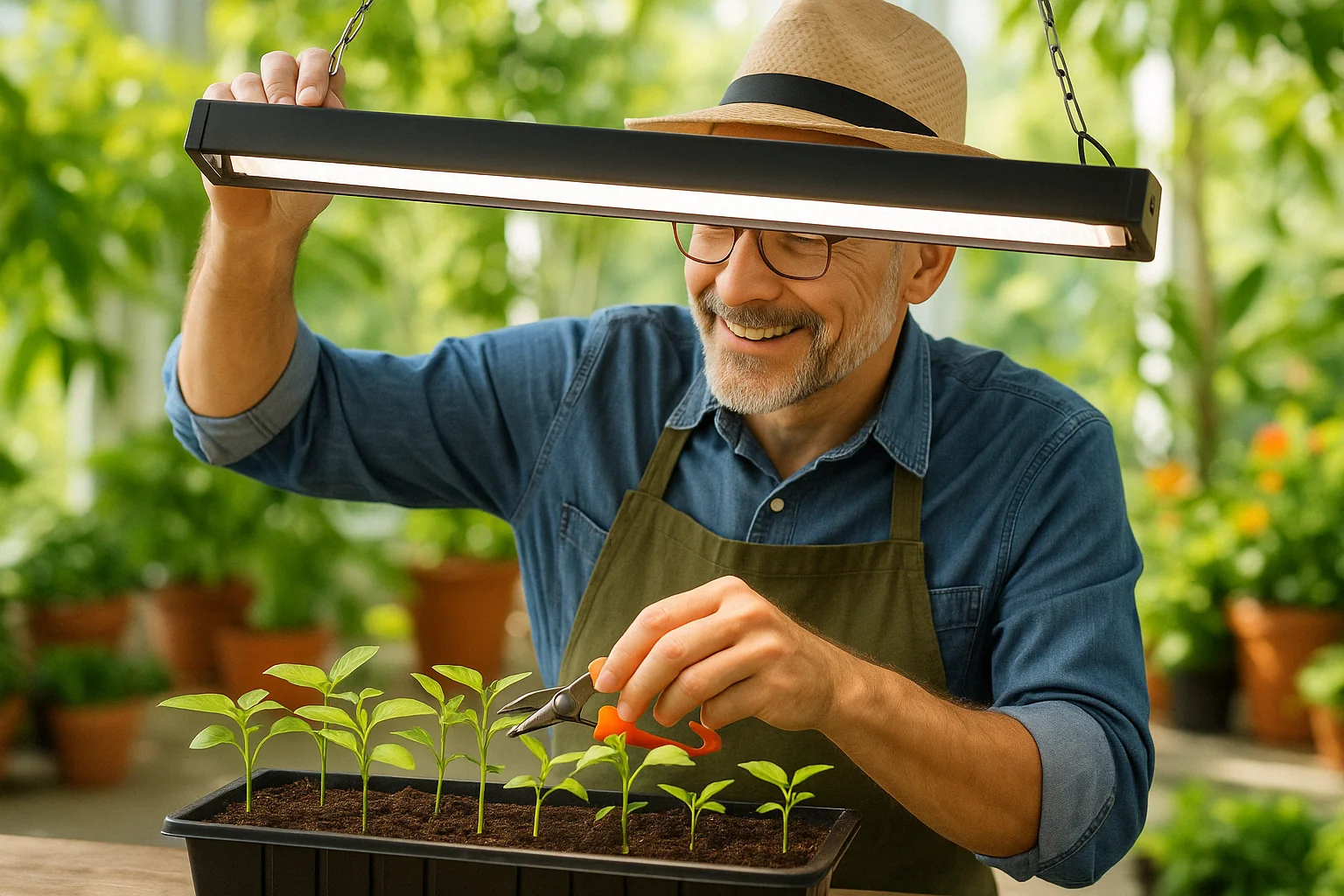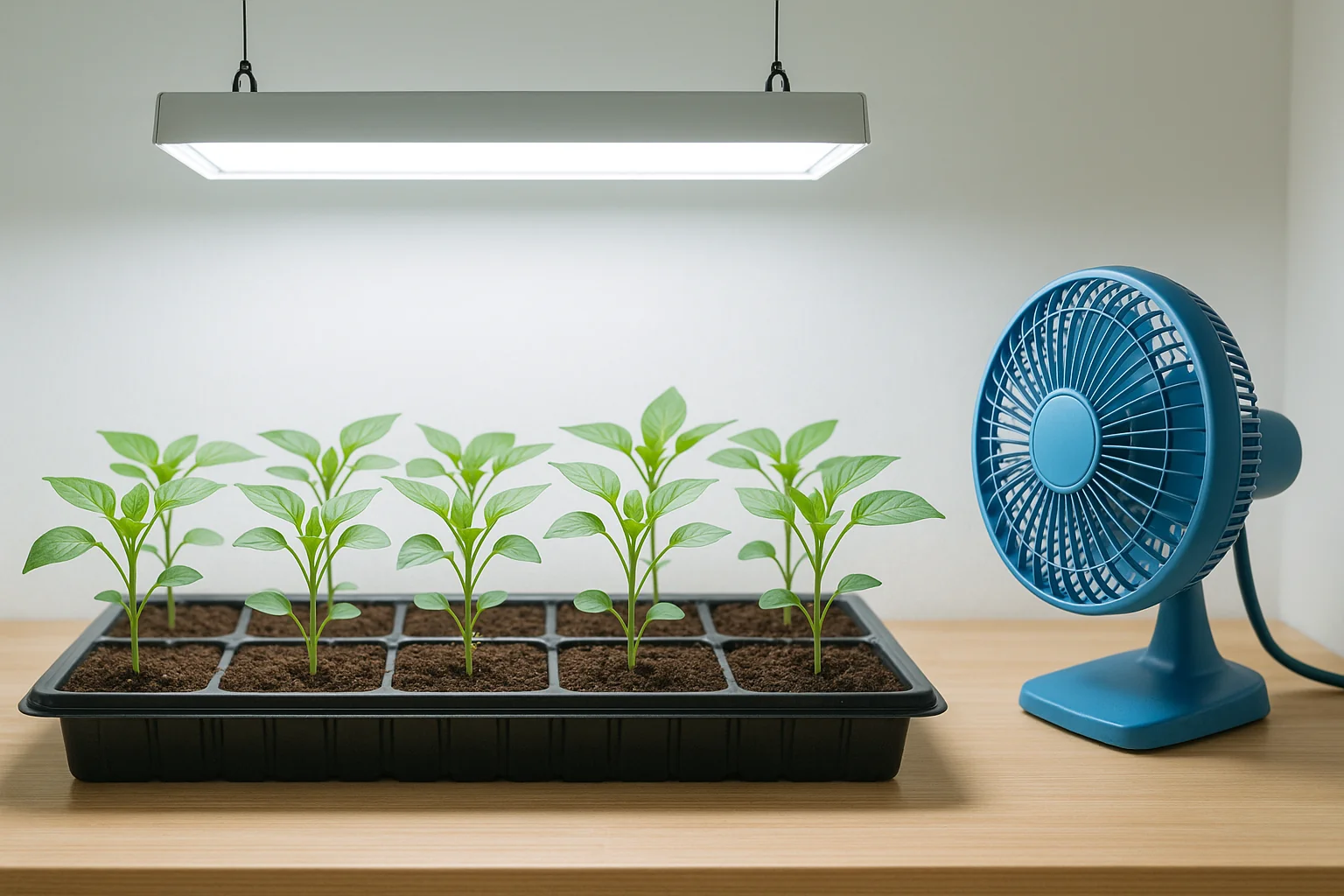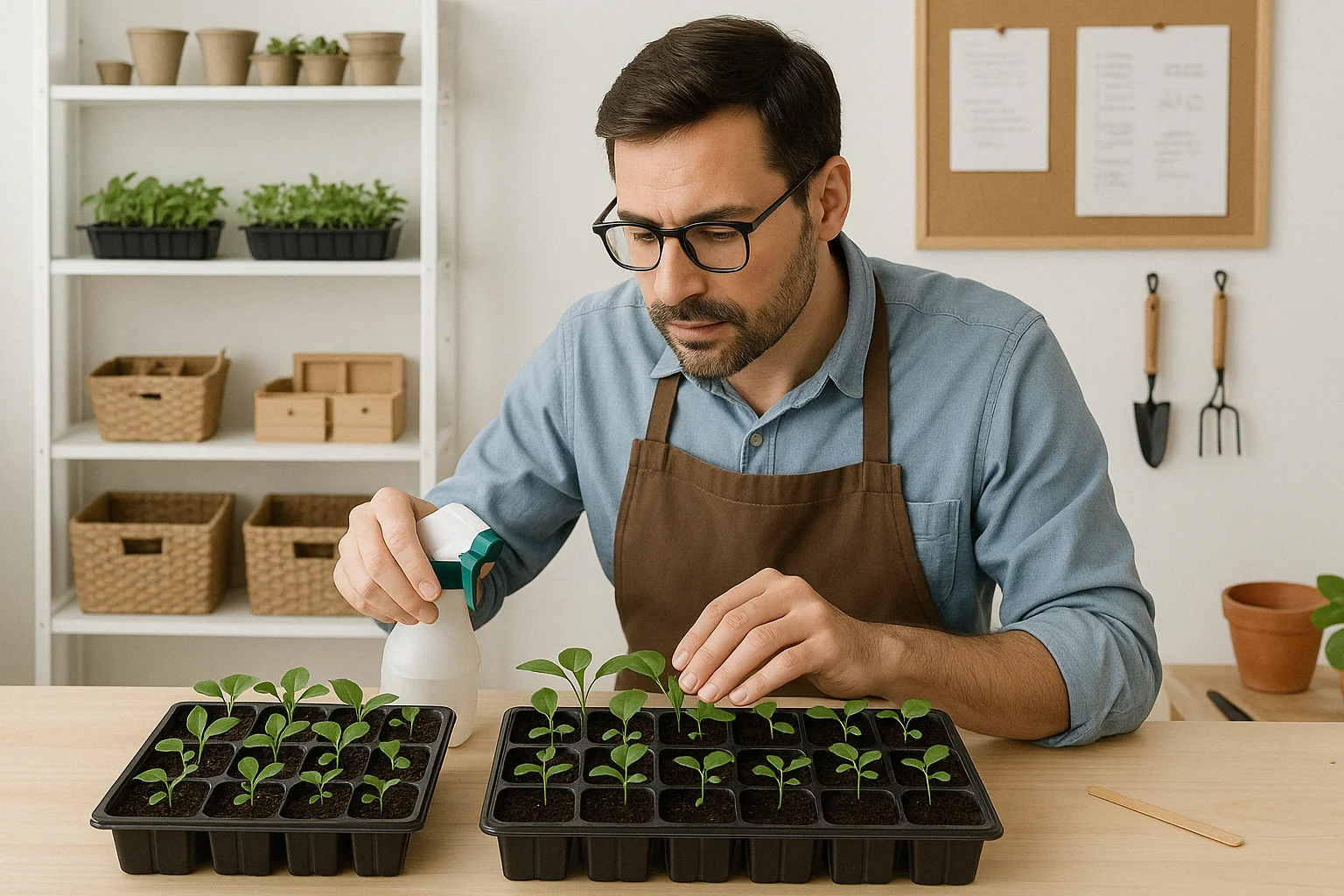
Leggy Seedlings Causes and Fixes: How to Revive Weak Plants for Healthy Growth
If you’ve ever seen your seedlings stretching tall and thin, struggling to stand upright, you’re not alone. These “leggy seedlings” can be a common frustration for gardeners, signaling that something isn’t quite right in their early development. Understanding the leggy seedlings causes and fixes is key to reviving these weak plants and ensuring healthy, robust growth. In this article, we’ll explore why your seedlings might be growing too tall and spindly and provide simple yet effective solutions to help you nurture them into strong, thriving plants. 🌸
Table of Contents
ToggleWhat Are Leggy Seedlings? 🌱
Leggy seedlings are young plants that have grown tall and spindly with weak stems and sparse leaves. This often occurs when plants don’t receive enough light, causing them to stretch toward the light source in search of more energy. While it’s natural for seedlings to grow tall as they seek light, excessive legginess is a sign that something is wrong with their growing conditions.

Typically, leggy seedlings will appear elongated, with long internodes (spaces between leaves), and the stems may be thin and fragile. This makes them more prone to breaking or toppling over. As a result, leggy seedlings may struggle to develop strong, healthy growth, which can affect their overall vitality and future performance in the garden.
Common Causes of Leggy Seedlings 🌿
Leggy seedlings are a common problem for gardeners, and they typically occur when plants grow tall and spindly, struggling to reach adequate light. Understanding the causes of leggy seedlings can help you prevent or fix the issue. Here are the key factors to watch out for:

Insufficient Light 💡
The most common cause of leggy seedlings is a lack of light. When seedlings don’t receive enough light, they stretch toward the source, resulting in tall, weak stems. Ensure your seedlings are getting 12–16 hours of bright, indirect light daily. If growing indoors, consider using grow lights for better results.
Overcrowding 🪴
When seedlings are too close together, they compete for light, space, and nutrients. This can force them to grow tall in search of light. Thin out your seedlings to give them enough room to spread and grow properly.
Incorrect Temperature 🌡️
High temperatures can also encourage rapid, weak growth. Seedlings grow best in temperatures between 65°F and 75°F (18°C–24°C). Too much heat, especially combined with insufficient light, causes them to become leggy.
Poor Soil Quality 🌍
Seedlings need nutrient-rich soil to grow strong. If the soil is too poor or lacks essential nutrients, plants may become weak and leggy. Use a quality seed-starting mix to ensure they receive proper nutrition from the start.
Inconsistent Watering 💧
Fluctuating moisture levels can stress seedlings and lead to uneven growth. Ensure your seedlings are consistently watered, but be cautious not to overwater, as this can lead to root rot and poor plant health.
By addressing these factors—light, space, temperature, soil, and watering—you can help your seedlings grow sturdy and healthy, avoiding the leggy look. 🌻
How to Fix Leggy Seedlings 🌱
Leggy seedlings are a common issue for gardeners, and fortunately, they can be fixed with the right approach. Here’s how to restore your seedlings to healthy growth:

Provide Adequate Light 💡
Leggy seedlings often occur when they don’t receive enough light. Ensure your seedlings get at least 12-16 hours of light per day. Place them near a south-facing window or invest in grow lights. Adjust the light source to be closer to the plants, about 2-4 inches above the seedlings, to encourage strong, upright growth.
Prune and Pinch Back ✂️
Cutting back the top of leggy seedlings will help them become bushier. Snip the top off each plant just above a set of leaves. This encourages side branches to grow, making the plant fuller. Pruning not only reduces leggy growth but also improves airflow, reducing the risk of disease.
Increase Light Intensity Gradually 🌞
If your seedlings are growing indoors, avoid suddenly moving them to direct sunlight, as this can shock them. Instead, gradually expose them to more light to build their tolerance, starting with a few hours of direct sunlight each day and increasing it over time.
Repot into Larger Containers 🪴
If your seedlings have become too tall and weak, transplanting them into slightly deeper containers can help. Bury the leggy stem, leaving only the top part exposed. This encourages the stem to develop roots along its length, creating a stronger and sturdier plant.
Adjust Temperature 🌡️
Too much heat can also cause legginess. Ensure your seedlings are in a temperature range of 65-75°F (18-24°C) during the day. A cooler environment can slow down excessive stretching and promote sturdier growth.
By following these steps, you’ll be well on your way to transforming your leggy seedlings into strong, healthy plants. A clear understanding of leggy seedlings causes and fixes is essential for successful recovery and future prevention.🌻
Preventing Leggy Seedlings in the Future 🚫🌱
Preventing leggy seedlings starts with understanding the key factors that contribute to this common problem. Here are practical steps to help you maintain strong, healthy seedlings from the beginning:

Provide Adequate Light 💡
Ensure your seedlings get enough light, ideally 12-16 hours a day. Place them under grow lights or near a south-facing window. If you notice seedlings stretching toward the light, increase the light intensity or move the light closer.
Maintain Proper Temperature 🌡️
Seedlings need warmth to thrive, but excessive heat can cause them to become leggy. Keep the temperature between 65-75°F (18-24°C) for optimal growth.
Space Seedlings Properly 🪴
Crowded seedlings often compete for light, leading to spindly growth. Thin out seedlings early to allow proper airflow and light distribution. This will encourage stronger stems and healthier plants.
Use a Fan for Air Circulation 🍃
Weak seedlings can also result from poor air circulation. Use a small fan to gently blow air over the seedlings. This simulates natural outdoor conditions and helps strengthen stems.
Avoid Overwatering 💧
Excess moisture can stunt seedling growth, causing them to stretch in search of light. Water seedlings only when the top inch of soil is dry, and ensure the containers have proper drainage.
Harden Off Seedlings Gradually 🌞
When transplanting seedlings outdoors, gradually expose them to sunlight and outdoor conditions. Start by placing them in a shaded spot for a few hours a day, then gradually increase exposure.
By following these simple steps, you can prevent leggy seedlings and promote healthy, sturdy growth that leads to a successful gardening season. Learning about leggy seedlings causes and fixes helps ensure your plants start strong and stay resilient.🌿
Additional Tips for Healthy Seedlings 🌱
Taking care of your seedlings goes beyond just watering and light. Here are a few expert tips to help ensure your young plants thrive:

Provide Adequate Light 💡
Seedlings need plenty of light to grow strong. Ensure they get 12-16 hours of light each day, either from natural sunlight or grow lights. If using artificial lighting, keep the lights close to the seedlings (about 2-4 inches above).
Maintain Consistent Temperature 🌡️
Seedlings thrive in a stable environment. Most plants prefer temperatures between 65°F to 75°F (18°C to 24°C). Avoid sudden temperature fluctuations, which can stress your plants.
Proper Air Circulation 🍃
Good airflow is essential for healthy seedlings. Place a small fan near your plants to prevent mold and fungus growth. Proper circulation also strengthens the seedlings’ stems.
Harden Off Before Transplanting 🌞
Before moving seedlings outdoors, gradually acclimate them to the outside environment. Start by placing them outside for a few hours each day, slowly increasing the exposure over a week. This process, called “hardening off,” reduces transplant shock.
Water Smartly 💧
Overwatering is a common mistake. Seedlings should be kept moist but not soggy. Water at the base to avoid wetting the leaves, and ensure the container has good drainage to prevent root rot.
Feed Lightly 🌿
Once seedlings develop their first true leaves, start feeding them with a diluted, balanced fertilizer. Avoid over-fertilizing, as this can harm young plants. Use a half-strength solution to prevent nutrient burn.
Watch for Pests 🐛
Keep an eye on your seedlings for common pests like aphids and spider mites. If you spot any, treat them with an organic insecticide or a gentle soap solution to keep your seedlings safe.
By following these simple but effective tips, you’ll give your seedlings the best chance to grow into strong, healthy plants ready for transplanting. 🌻
Final Thoughts 🌼
Dealing with leggy seedlings can be frustrating, but with the right approach, it’s possible to revive them and set them on the path to healthy growth. By addressing the common causes—insufficient light, overcrowding, improper watering, and excessive heat—you can create a more supportive environment for your seedlings. Understanding leggy seedlings causes and fixes can make all the difference in turning weak sprouts into thriving plants. Remember, proper lighting, proper spacing, and a little patience are key to nurturing strong, robust plants.

By following the fixes outlined in this article, you’ll not only save your leggy seedlings but also prevent future problems. Healthy seedlings lead to stronger, more productive plants in the long run, giving you a rewarding gardening experience. Keep experimenting, stay attentive to your plants’ needs, and soon enough, you’ll be reaping the rewards of your hard work! 🌿
Frequently Asked Questions (FAQ)
What causes leggy seedlings?
Leggy seedlings are primarily caused by insufficient light, which leads the plants to stretch and become tall and thin as they search for more light. Other factors, such as overcrowding, improper watering, and excessive heat, can also contribute to this condition.
How can I fix leggy seedlings?
To fix leggy seedlings, ensure they get enough light. Move them to a brighter spot or use artificial grow lights. You can also gently transplant them into deeper pots to encourage stronger root development and improve their overall structure. Additionally, thinning overcrowded seedlings and adjusting watering habits can help.
Can leggy seedlings be saved?
Yes, leggy seedlings can be saved! By addressing the underlying causes, such as providing adequate light and space, you can help them regain strength. Additionally, you can pinch back the growing tips to encourage more compact growth.
How much light do seedlings need to avoid becoming leggy?
Seedlings generally need about 12-16 hours of light daily to prevent legginess. If natural sunlight isn’t enough, use a grow light to supplement their light intake.
Should I repot leggy seedlings?
Yes, repotting leggy seedlings into deeper pots can help support stronger root systems and reduce further stretching. Be sure to plant them deeply enough to cover the leggy stems, which can encourage more vertical growth and stability.
Can leggy seedlings recover if I don't have access to grow lights?
While grow lights are ideal, you can still help leggy seedlings recover with natural light. Place them in the sunniest window possible and rotate them regularly to ensure even light distribution. If sunlight is insufficient, using reflective surfaces like aluminum foil to bounce more light onto the seedlings can help.
How long does it take for leggy seedlings to recover?
With proper care, leggy seedlings can start to show signs of improvement within a few weeks. However, it may take some time for them to fully recover and develop into healthy, sturdy plants. Be patient and continue to monitor their progress.
Why are my seedlings tall, thin, and falling over?
Leggy seedlings are typically caused by inadequate light—either not enough intensity or the light source being too far away. When seedlings stretch to find more light, they become weak and spindly. Other contributors include high temperatures, overcrowding, and over-fertilization. To fix leggy seedlings, move them closer to a strong light source (like a grow light), reduce room temperature slightly, thin out crowded seedlings, and avoid overfeeding. Early intervention helps strengthen growth and improve plant survival.
